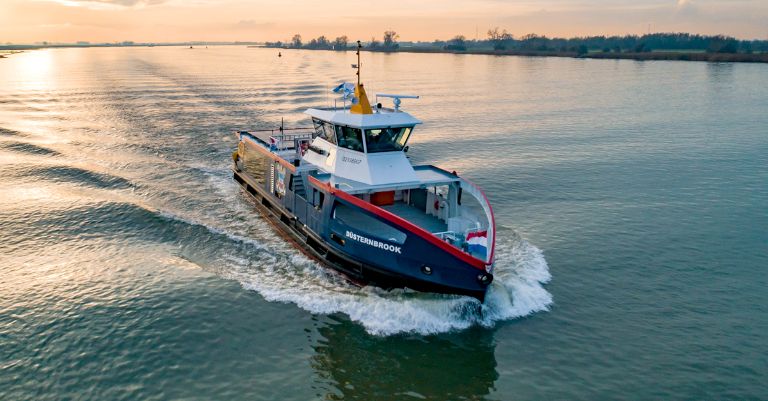Smooth Sailing: CSRD Compliance for Holland Shipyards

CSRD Compliance for Holland Shipyards
Founded in the 1980s, Holland Shipyards Group has grown into a leading player in the global maritime industry, specialising in sustainable shipbuilding and offshore solutions. With headquarters in the Netherlands and projects completed across Europe, Holland Shipyards serves a diverse range of clients worldwide. Known for its innovation, quality, and commitment to sustainability, the company consistently adheres to the highest industry standards to deliver safe, efficient, and environmentally responsible vessels.
The challenge
By 2025, Holland Shipyards must comply with the new European Corporate Sustainability Reporting Directive (CSRD). This directive revises and strengthens the requirements for disclosing ESG information. The CSRD’s recent introduction and complexity, combined with a short timeframe, make timely compliance challenging. This is where Good Growth Collective steps in: we support Holland Shipyards in navigating these challenges and guide them toward full CSRD compliance.

CSRD implementation for Holland Shipyards
We've created a clear roadmap for Holland Shipyards to achieve CSRD compliance.
Here's how we did it:
Step 1: Setting up a CSRD team
The first step in the process is forming a CSRD team. This team is composed of representatives from various departments within the company to ensure a broad and inclusive range of opinions and perspectives.
Step 2: Double Materiality Analysis (DMA)
Our double materiality assessment covers four major points: Impact assessment, Stakeholder engagement, Scoring Impacts, Risks, and Opportunities (IRO), and the Materiality matrix:
Impact assessment: During the impact assessment, potentially relevant sustainability topics are identified.
Stakeholder engagement: To incorporate stakeholder opinions, an online survey is sent out. This survey allows key stakeholders to provide input on what they view as critical sustainability issues.
Scoring Impacts, Risks, and Opportunities (IRO): For each potentially important topic, the significance is determined based on impact and financial materiality.
Materiality matrix: Based on the scores and the established thresholds, a materiality matrix is created, which highlights the material sustainability topics for Holland Shipyards.
Step 3: Gap analysis
After identifying the material topics, the next step is to assess which data points are already available and which are missing. The gap analysis identifies any management, data, or disclosure gaps, ensuring that all necessary information is gathered promptly to meet CSRD compliance requirements.
Step 4: CSRD roadmap
The final step involves creating the CSRD Roadmap. The roadmap provides a clear overview of the actions that need to be taken by Holland Shipyards to meet the compliance requirements. This roadmap serves as the second key deliverable in this process.

Results
- Identified material topics: Through the various stages of the double materiality analysis, material sustainability topics for Holland Shipyards were identified and presented within a materiality matrix.
- Identified data gaps: In preparation for the CSRD reporting process, a comprehensive overview was created to highlight the data gaps for each material topic. This overview facilitates a more targeted approach to data collection and supports an efficient compliance process.
- Required next steps: A detailed CSRD roadmap was developed, outlining the steps necessary to achieve full compliance with the CSRD.
Reach out to us for any question
Wondering how we can help? Or looking for more information on an ESG topic?
Contact us